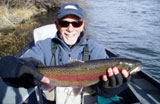Description
This fly is based on a pattern tied by my
friend Ralph Wood, with some modifications.
Skwala stoneflies are found in many northern
California rivers, but seem to often go
unnoticed. Not so on the Lower Yuba River,
since it is a prominent hatch that normally
begins in January, continuing into February
and sometimes longer. It’s a great time to
catch those “rocket” Yuba fish on top. I’ve
seen only a few good Skwala imitations on
the market. The “good” ones have two
essential qualities, in my mind: First, they
are tied sparsely; And second, they
incorporate the right colors. It is
important to imitate the color of the
underside of the abdomen of the Skwala
adult—a yellowish olive color—and the dark
olive color of the fly’s back. Only the
females fly, so it is mostly them that
you’ll see struggling in the surface film
out where the fish live.
Tying Instructions
(For best viewing: (1) Maximize
your Browser Window. (2) Type "Ctrl
+ or -" to enlarge or contract the
webpage display. (3) Use the
Horizontal and Vertical Scroll Bars
to scroll right and up/down to
display larger photos in your
browser)
|
-
Debarb the hook, place it in
your vise, and cover the shank
with thread. Be sure to leave
plenty of room behind the hook
eye.
-
Move the thread to the rear of
the hook, just above the back of
the barb. Cut a strip of black
foam 1/8” in width. Heat one end
of it so it “rounds” itself. Tie
the foam in with the rounded end
to the rear. It should stick out
about 1/8” to the rear.
|
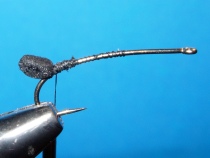 |
|
|
-
Tie in a properly sized black
hackle at the same point.
|
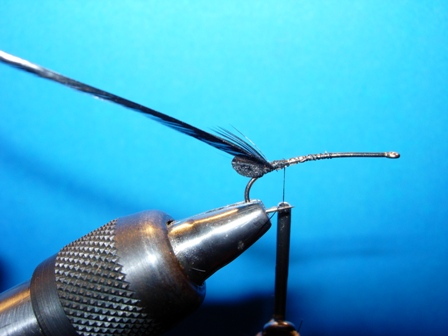 |
|
|
|
-
Dub the
thorax, but don’t use too much
material. Sparse is best on this
pattern.
|
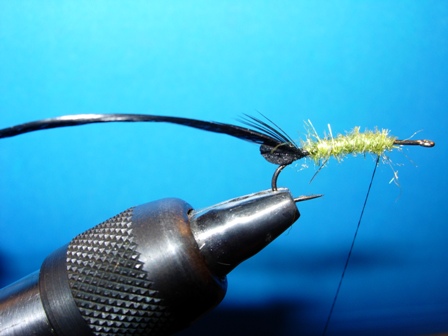 |
|
|
|
-
Palmer the hackle up through the
abdomen, using about 5 turns.
Tie it off at the front of the
abdomen.
|
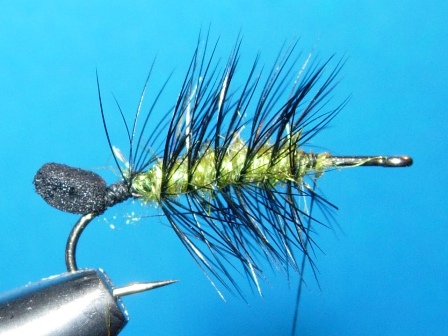 |
|
|
|
-
Clip the hackle on the bottom
and on the top, so that the
remaining fibers stick out to
the sides.
|
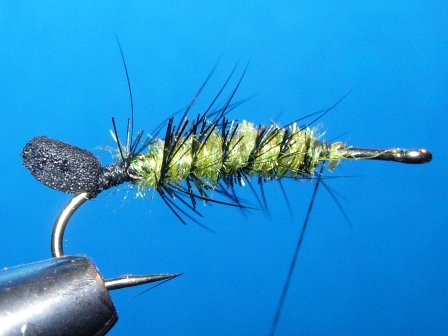 |
|
|
|
-
Cut a piece of the micro-web
material that is about ¼” wide
and 1” long. Round the corners
of one end, and tie the material
in at the front of the abdomen,
with the rounded corners to the
rear. The rear of the wing
should be no longer than the end
of the hook
|
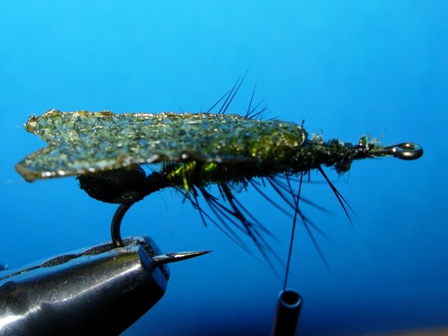 |
|
|
|
-
Cut a small bunch of dark olive
deer hair and clean out the
under-fur. Stack it, and measure
it to the same length as the
under-wing. Tie it in at the
same point and add a drop of
super-glue.
|
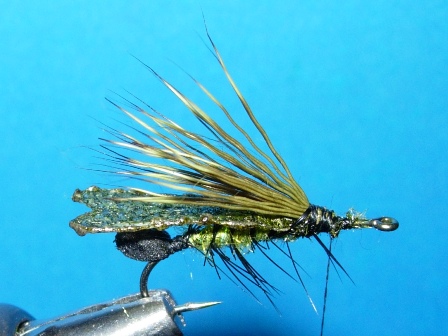 |
|
|
|
-
Dub a sparse thorax, and then
tie in the legs in the middle of
the thorax. Add a bit more
dubbing between the legs.
|
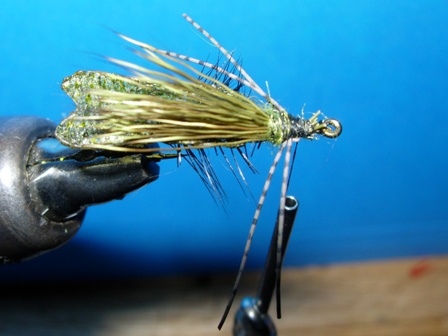 |
|
|
-
Tie in a properly sized hackle
and take 3 or 4 turns. Whip
finish the fly. Trim the hackle
top and bottom and apply a drop
of superglue at the head.
|
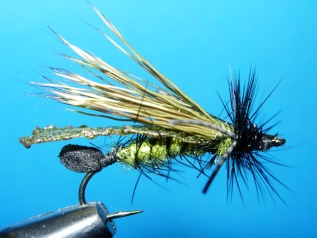 |
|
|
|
Tying
Tips
-
Be sure to leave plenty of room
behind the hook eye. From the
instructions above, you can see
that there are a number of steps
that require work in that space
between the thorax and the hook
eye.
-
If you have a wing burning tool
that is shaped like a stonefly
wing, use it to burn the
micro-web wings. They come out
perfect every time.
|
|
 |
|

